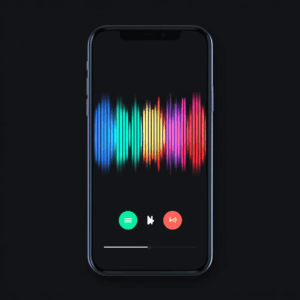Imagine a classroom where every student, regardless of their reading level, learning style, or background, can access the same rich text and complex ideas with confidence. This is the promise of the modern, inclusive classroom—a learning environment that celebrates neurodiversity and removes barriers to participation. At the heart of this educational revolution is a powerful, empathetic technology: text-to-speech (TTS). By giving digital text a voice, we are not just providing an accommodation; we are fundamentally reshaping the learning experience to ensure that every child has the tools they need to succeed. Innovative tools like Speaktor are making this easier than ever, allowing educators to quickly create accessible audio versions of materials, fostering a truly equitable space where all students can thrive. This positive shift is moving us beyond a one-size-fits-all model and towards a future of personalized, empowered education.
The goal of inclusion is not just to have all students in the same room, but to have all students actively and meaningfully engaged in the same curriculum. Text-to-speech technology is a key that unlocks this engagement, supporting diverse learners from those with identified challenges to those who simply benefit from hearing information presented in multiple ways. Let’s explore how this technology is building stronger, more supportive, and more effective classrooms for everyone.
Leveling The Playing Field: Core Benefits For Diverse Learners
 The impact of TTS is profound because it addresses a wide spectrum of learning needs simultaneously, creating a more cohesive and supportive learning community.
The impact of TTS is profound because it addresses a wide spectrum of learning needs simultaneously, creating a more cohesive and supportive learning community.
A Lifeline For Students With Reading Difficulties
For students with dyslexia, decoding difficulties, or other reading challenges, traditional text-heavy assignments can be a source of immense anxiety and frustration. TTS removes this barrier entirely. By listening to the text read aloud fluently and with correct pronunciation, these students can focus their cognitive energy on what matters most: comprehension and critical thinking. Instead of struggling to sound out each word, they can engage with the meaning of a historical document, the plot of a novel, or the steps of a scientific process. This reduces fatigue, builds confidence, and allows them to demonstrate their true intellectual capabilities.
Supporting English Language Learners (ELLs)
For students learning English, the classroom can be an overwhelming auditory environment. TTS provides a private, patient, and consistent reading partner. They can listen to assigned texts at their own pace, replay difficult sections, and hear the correct pronunciation and intonation of new vocabulary words. Seeing the words highlighted on a screen as they are spoken reinforces the connection between written and spoken English, accelerating language acquisition and helping ELLs participate more fully in class discussions and activities.
Engaging Auditory Learners And Enhancing Focus
Every classroom is filled with students who have different learning preferences. Many are auditory learners who absorb and retain information more effectively when they hear it. TTS caters directly to this preference, making learning more intuitive and enjoyable for them. Furthermore, the use of headphones with TTS can help students with attention challenges, such as ADHD, by minimizing auditory distractions in the classroom and allowing them to concentrate solely on the text at hand.
The Teacher’s New Ally: Streamlining Instruction And Personalization
Text-to-speech technology is not just a tool for students; it is a powerful assistant for educators, enabling them to meet the needs of a diverse classroom more effectively than ever before.
Differentiating Instruction With Ease
Creating differentiated materials for 25+ students has traditionally been a time-consuming task for teachers. TTS simplifies this process dramatically. With a tool like Speaktor, a teacher can quickly convert a worksheet, a primary source document, or a chapter from an online textbook into an audio file in minutes. This means they can provide immediate, accessible audio versions of materials without having to pre-record themselves reading everything. This efficiency allows teachers to spend more time on direct instruction and one-on-one support.
Promoting Independence And Self-Advocacy
A primary goal of education is to create independent learners. TTS empowers students to take control of their own learning. They can learn to use the technology themselves to access materials without always needing direct teacher intervention. This fosters self-reliance and self-advocacy skills—students learn to identify what they need and utilize the tools available to them, a skill that will benefit them long after they leave the classroom.
Enriching The Entire Classroom Experience
TTS can be used for whole-class activities as well. Playing a text read by a clear, neutral AI voice during a shared reading activity ensures that every student, including struggling readers, can follow along without stigma. It can also be used to create engaging multimedia presentations or to bring historical speeches to life with dramatic readings, making lessons more dynamic and memorable for the entire group.
Implementing TTS Successfully: A Guide For A Positive Transition
Integrating any new technology requires thoughtful planning. Here’s how to ensure a smooth and positive implementation of TTS in the classroom:
-
Normalize The Technology: The most important step is to present TTS as a tool for everyone, not just an “accommodation” for a few. Introduce it to the whole class as a “cool way” to listen to stories, help with focus, or hear how a professional narrator might read a text. When all students are encouraged to use it, the stigma is removed.
-
Choose User-Friendly Tools: Select TTS applications or browser extensions that are intuitive and age-appropriate. Look for features like high-quality, natural voices, the ability to adjust reading speed, and simple highlighting features that track the words as they are spoken.
-
Provide Direct Instruction: Don’t assume students will know how to use the technology effectively. Teach them how to use the play, pause, and rewind functions strategically. Show them how to slow down the speech for complex passages and speed it up for review. This is a crucial executive functioning skill.
-
Curate Accessible Digital Materials: Build a library of digital texts that can be used with TTS software. This includes PDFs, e-books, and online articles. The more materials available in a digital format, the more powerful the tool becomes.
Building A Culture Of Empathy And Equity
Ultimately, the integration of text-to-speech technology does more than improve test scores; it builds a more empathetic and positive classroom culture. When students see that their individual needs are valued and supported, they feel a greater sense of belonging. They learn that everyone has unique strengths and challenges, and that technology is a bridge to overcoming obstacles together.
The inclusive classroom is no longer an idealistic dream. It is an achievable reality, and text-to-speech technology is a cornerstone of this new paradigm. By embracing tools that empower every type of learner, we send a powerful message to our students: “Your way of learning is valid, and you are capable of great things.” We are not just teaching them to read; we are teaching them to overcome challenges, to advocate for themselves, and to become lifelong learners in a world rich with possibility. The future of education is inclusive, and it sounds wonderful.

